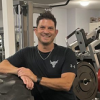Premier - Local Athletic Therapist
-
Shoulder Exercises
Shoulder exercises can range from a shoulder flies to shoulder press exercises. Shoulder exercises can be done individually or as a pair. Shoulder exercises for good for back and neck strenght.
-
Loading the player...
Shoulder Exercises With Standing Side Flies <p><a href="https://www.healthchoicesfirst.com/practitioner-type/kinesiologist">Kinesiologist </a>discusses standing side shoulder flies to build strength.</p>Kinesiologist discusses standing side shoulder flies to build strength.
-
Loading the player...
Standing Shoulder Dumbbell Press <p><a href="https://www.healthchoicesfirst.com/practitioner-type/kinesiologist">Kinesiologist </a> discusses standing shoulder dumbbell press strength exercises.</p>Kinesiologist discusses standing shoulder dumbbell press strength exercises.
-
Loading the player...
Standing Shoulder Shrugs <p><a href="https://www.healthchoicesfirst.com/practitioner-type/kinesiologist">Kinesiologist ,</a> discusses standing shoulder shrugs to build strength.</p>Kinesiologist , discusses standing shoulder shrugs to build strength.
-
Shoulder Exercises With Standing Side Flies
Standing shoulder flies to the side are a type of exercise that target the shoulder muscles. Here's a breakdown of the instructions provided:
-
Start by standing with your feet shoulder-width apart and your pelvis in a squared position. This means your hips should be facing forward, and your stomach should be pulled in to engage your core muscles. Keep your chest lifted throughout the exercise.
-
Hold a weight in each hand, such as dumbbells, with a loose grip. It's important not to grip the weights too tightly.
-
Begin the exercise by lifting the weights to the side of your body, moving them away from your hips. Keep your arms straight but with a slight bend at the elbows.
-
Continue raising the weights until your arms are at approximately a 90-degree angle to your body. The weights should be at shoulder level or slightly below it. This position targets the shoulder muscles effectively.
-
You can choose to perform the exercise with one arm at a time or with both arms together, depending on your preference and the weight you're using.
-
It's recommended to select a weight that allows you to perform 10 to 20 repetitions with proper form. This range ensures an appropriate level of challenge for the muscles.
-
You can incorporate this exercise into your routine by performing it once a day or every other day. Consistency is key for seeing progress and building strength.
Remember to always be mindful of your shoulder health when performing shoulder flies. Avoid gripping the weights too tightly, as this can put unnecessary stress on your wrists and hands. Instead, maintain a loose grip to ensure the focus is on engaging the upper shoulder muscles.
Note: The information provided in the question seems to be a transcript from a fitness presenter, possibly a kinesiologist. If you are looking for local practitioners, such as kinesiologists, it's recommended to search in your local area or consult with a healthcare professional who can provide recommendations based on your specific needs. The local Registered Massage Therapists are in good standing with the Canadian Massage Therapist Association of Canada
-
-
Standing Shoulder Shrugs
The instructions provided by the physiotherapist are for performing standing shoulder shrugs. Here's a breakdown of the steps:
-
Positioning: Start by getting into a good solid position. Push your hips back (as if you're sitting back in a chair) and bend your knees slightly. This will help stabilize your body.
-
Grip and weight: Hold a dumbbell or weight plate in each hand, but make sure to keep your grip loose. The weight should be held loosely, not tightly.
-
Dropping down through the shoulders: Let your shoulders drop down naturally, allowing the weight to pull your shoulders slightly downward.
-
Starting position: From this down position, you're ready to begin the exercise.
-
Shoulder elevation: Use your upper shoulder and upper back muscles to raise your shoulders upward, as high as you comfortably can. Focus on contracting these muscles.
-
Shoulder depression: After elevating your shoulders, bring them back down to the starting position. This completes one repetition.
-
Neck mobility: Shoulder shrugs are an effective exercise for loosening up your neck. The up-and-down motion helps alleviate tension and improve mobility in the neck area.
-
Repetitions: Perform 10 to 15 repetitions of the shoulder shrug exercise, maintaining a nice and steady rhythm.
Remember to keep your hands loose throughout the exercise. Avoid gripping the dumbbell tightly, as this can interfere with the activation of your back muscles.
Please note that it's always important to consult with a professional, such as a physiotherapist or personal trainer, before starting a new exercise routine to ensure it is appropriate for your individual needs and to avoid the risk of injury.
The physiotherapists are in good standing with the Physiotherapy Association of Canada
Key Words: Achilles Tendon, Back & Sciatic Pain, Carpal Tunnel Syndrome, Chronic Pain, Cortisone Injections,De Quervain's Tenosynovitis, Common Foot Issues, Ganglion Cyst, Neck Pain & Sleep Problems
The local Chiropractors are in good standing with the College of Chiropractic Association of Canada Keywords: What Causes Sciatic Pain of the Low Back, Back Pain and Problems from Sitting, Common Cycling and Back Pain Injuries, Neck Pain, How Pilates Can Help With Back Pain, How Core Stability of the Ankle, Leg Length Discrepancy.
-









